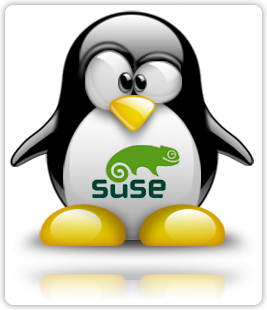
After more than five years of development, SUSE on Monday rolled out SUSE Linux Enterprise 12, a brand-new version of the enterprise-class edition of its popular Linux platform. Built for reliability, scalability and security, the new release is designed to help companies efficiently deploy and manage highly available IT services in physical, virtual or cloud infrastructures.
SUSE Linux Enterprise 12 serves as the foundation for all SUSE data center operating systems and extensions. New operating systems and software extensions based on it include SUSE Linux Enterprise Server for x86_64, IBM Power Systems and IBM System z; SUSE Linux Enterprise High Availability Extension and Geo Clustering for SUSE Linux Enterprise High Availability Extension; SUSE Linux Enterprise Virtual Machine Driver Pack; and SUSE Linux Enterprise Desktop and SUSE Linux Enterprise Workstation Extension.
 Included in these new products are feature enhancements aimed at better enabling system uptime, improving operational efficiency and accelerating innovation, SUSE says. Also new in this version is an updated customer portal designed to make it easier for customers to manage their subscriptions, access patches and updates and communicate with SUSE customer support.
Included in these new products are feature enhancements aimed at better enabling system uptime, improving operational efficiency and accelerating innovation, SUSE says. Also new in this version is an updated customer portal designed to make it easier for customers to manage their subscriptions, access patches and updates and communicate with SUSE customer support.
Linux.com recently had a chance to speak about the highlights of this new release with several members of the SUSE Linux Enterprise team, including George Shi, its product marketing manager; Kerry Kim, director of strategic marketing; and Matthias Eckermann, senior product manager for SUSE Linux Enterprise.
Support for Linux Containers
There are a number of new features in SUSE Linux Enterprise 12 with particular benefits for companies operating in cloud computing environments, the team said.
For example, “we now have modules,” Eckermann told Linux.com. Specifically, SUSE Linux Enterprise Server Modules offer a choice of supplemental packages, including tools for web development and scripting, public cloud management and advanced systems management. Modules are part of companies’ SUSE Linux Enterprise Server subscriptions and are delivered as online repositories.
As part of the public cloud module, for instance, SUSE worked with leading cloud vendors to use and provide their tools precompiled and prepackaged for enterprises, he explained.
“A module is a part of SUSE Enterprise Server that has a more aggressive life cycle than the base of the OS,” Eckermann pointed out. “With these kinds of modules, we are helping people in industry have enterprise-ready support but also receive and be able to develop on recent software stacks.”
With support for Microsoft tools along with VMware, Xen and KVM, SUSE Linux Enterprise Server also supports Linux Containers, which are integrated into the virtualization management infrastructure (lib-virt). Docker is provided as a technology preview.
“There is no enterprise mission-critical support for Docker available anywhere,” Eckermann said.
KIWI for Image Building
KIWI, meanwhile, is “a really nice tool that can help customers integrate the image-building process,” Shi noted. “You can take one configuration, build an image, and deploy it onto Xen, KVM, Docker. It offers one configuration, deploy anywhere.”
With regard to containers, “you want to be as lightweight on the disk as possible,” he pointed out. “You can make them small with KIWI, but if you want to have the real space-saving capabilities, you want to use Btrfs. The file system itself is capable of deciding if it has to waste extra space for bytes coming in or if it can reuse an existing space. It also supports cloning directly. This is where the real benefits come in: Hundreds of containers per minute can be spawned off. This is what is coming down the road.”
In many ways, private clouds are replacing what classically the big companies’ data centers have done, Eckermann said. Accordingly, “you want the cloud host systems to be rock-solid.”
With SUSE Linux Enterprise 12, “we are trying to eliminate downtime and increase uptime,” he added. “On cloud hosts, you don’t want to have any kind of weakness, because mission-critical infrastructures and applications will depend on the private cloud going forward.”
SUSE Linux Enterprise Server 12 images—with modules enabled—are also now available on Amazon Web Services, Google Compute Engine and Microsoft Azure. More information about SUSE Linux Enterprise 12 is available online, as are details on pricing and availability for SUSE Linux Enterprise Server 12.


